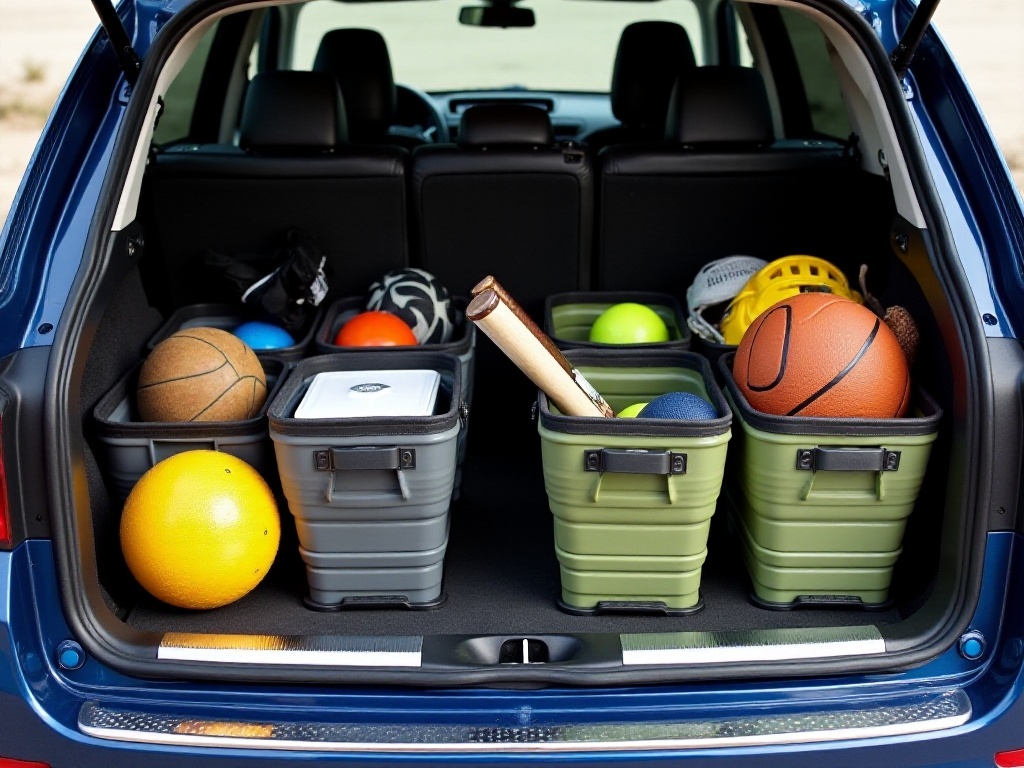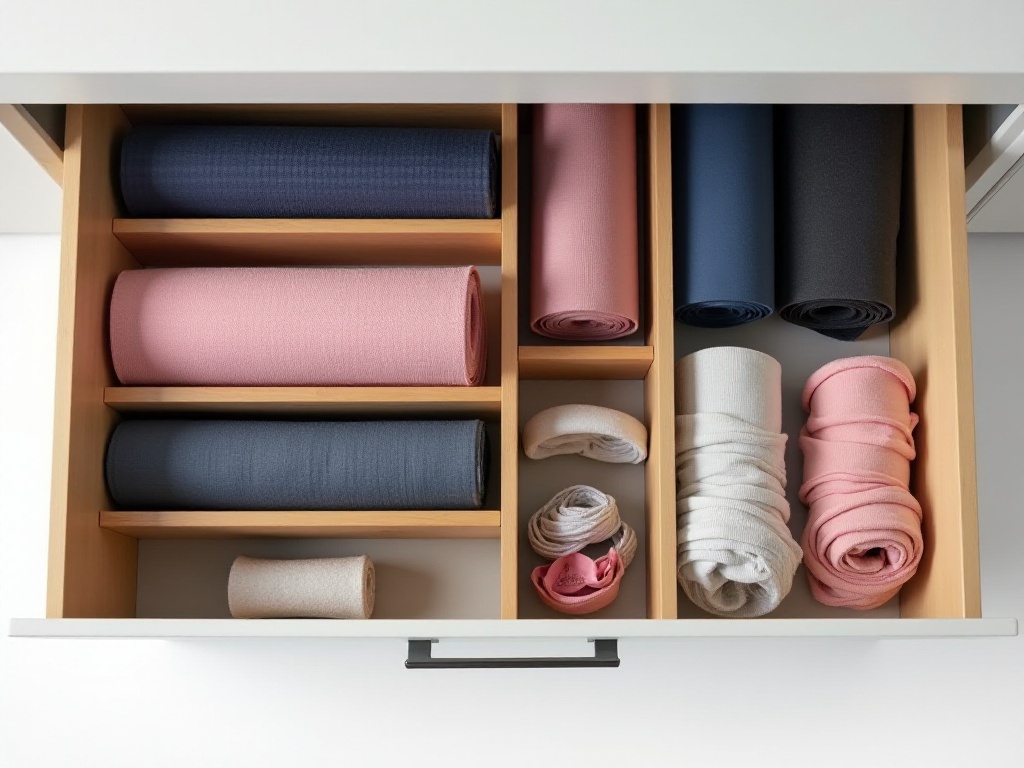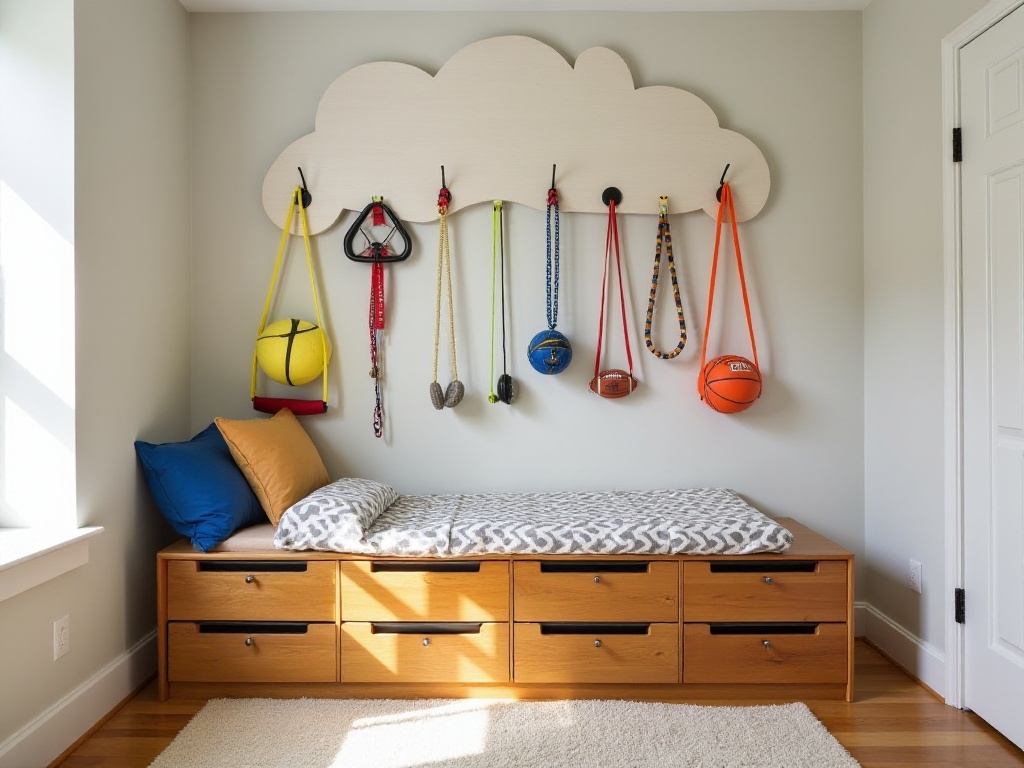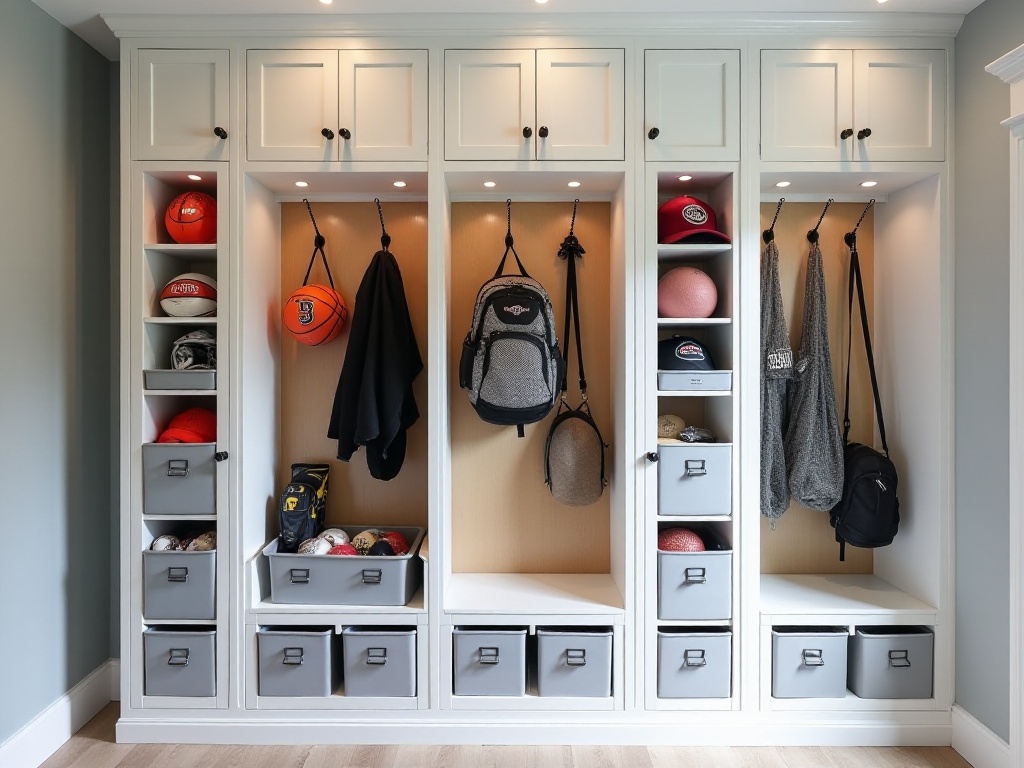Opening Chat
I'm a total fitness enthusiast, and my home is packed with sports equipment! From yoga mats to basketballs, from dumbbells to bicycles - it's practically a mini gym. Recently, I realized these items were taking over my home, and finding anything felt like a treasure hunt. My yoga mat was yellowing on the balcony, the basketball behind the door was a constant tripping hazard, and the resistance bands were a tangled mess that took forever to sort through.
Does this sound familiar? Well, I'd had enough. As both a fitness buff and organization enthusiast, I couldn't let this chaos continue. After years of trial and error, I've finally discovered some reliable storage solutions that I want to share with others facing similar challenges.
Wall Storage
My storage journey has been quite the emotional roller coaster. Like most people when they first start working out, I used to just toss equipment into corners. Dumbbells under the TV stand, exercise ball behind the sofa, resistance bands and jump ropes on top of the shoe cabinet. Finding anything meant turning the house upside down and usually left a mess in the process.
Then one day, I came across a foreign blogger's storage video, and their wall storage system completely blew me away! I immediately ordered a bunch of storage racks and hooks, and spent a weekend transforming my walls into an ultimate storage solution.
Now I have a complete track-based storage system on my walls that can be adjusted as needed. Tennis and badminton rackets hang on special hooks, preventing warping while looking like art pieces. Basketballs and soccer balls sit on wall-mounted shelves, saving space while remaining easily accessible.
My proudest feature is the S-shaped hooks, perfect for sports bags and helmets. These hooks are incredibly strong, easily handling fully loaded sports bags. Plus, they rotate freely, making it super convenient to grab and store items. What used to be a scavenger hunt before heading out to exercise is now a simple turn and grab - the efficiency boost is incredible.
Oh, and here's a clever tip: I installed a small blackboard next to the storage system to track weekly workout plans and equipment usage. It helps me stay consistent with exercise and monitor when gear needs maintenance or replacement.

Bicycle Storage
If we're talking about storage challenges, bicycles are definitely the final boss. As a cycling enthusiast, I know this pain point all too well. A bike in a home, especially in my small apartment, has an overwhelming presence.
Initially, I kept my bike in a corner of the living room, but I had to squeeze past it constantly, worried about scratching it. After rainy rides, muddy tire marks all over the floor would drive my mom crazy.
After various attempts, I finally found the perfect solution: vertical bike storage! I installed a professional bike mount on the garage wall that securely holds the bike vertically. The mount is super sturdy and has protective rubber padding to prevent frame damage. Best of all, it's a huge space saver - where one bike used to fit, I can now hang two.
Next to the bike, I created a cycling gear zone. Helmets have dedicated hooks, the pump sits on a tool rack below, and there's a small drawer specifically for repair tools and spare parts. Cycling clothes and shoes also have their designated storage spots. Everything I need for a ride is in one place - no more hunting around the house.
To protect against dust, I got a custom bike cover. It's breathable to prevent mold, and waterproof too. Covering the bike after washing and drying keeps it looking brand new.
Zone Organization
The essence of storage really comes down to zone management. Initially, I piled all my sports equipment together, making finding anything like searching for a needle in a haystack. Then I had an epiphany and started organizing by sport type and frequency of use.
In the garage, I use several foldable storage boxes, each with its own label. Frequently used training equipment like resistance bands and grip strengtheners go in an easily accessible box. Competition gear like professional shoes and protective equipment goes in another. There's even an insulated storage box specifically for energy bars, sports drinks, and supplements. These boxes are all collapsible, saving space when not in use.
In my home closet, I use drawer organizers for sports clothes and small items. Training wear and competition gear are separated, with each drawer divided into smaller sections. Wristbands, knee pads, and other accessories each have their designated spots. Best of all, the transparent drawers make everything visible at a glance.
To make storage more scientific, I analyzed usage frequency. Weekly equipment goes in the most accessible spots, while seasonal sports gear can be stored in more discreet locations. For example, swimming gear is front and center in summer, while ski equipment gets tucked away in storage.
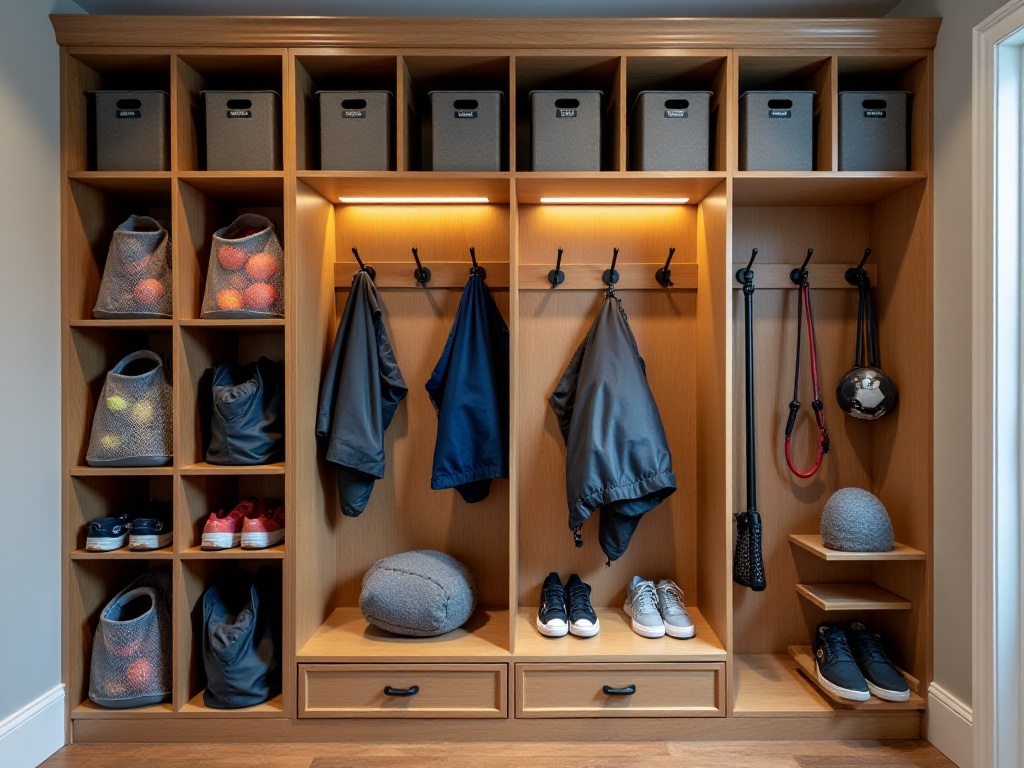
Cleaning and Maintenance
When it comes to storing sports equipment, finding a place to put things isn't enough - maintenance and cleaning are crucial too. I've developed a good habit of quick-cleaning equipment after each use, which not only extends its lifespan but keeps storage spaces tidy.
For sweat-absorbing gear like wristbands and knee pads, thorough drying is essential before storage. I installed a drying rack on my balcony specifically for this equipment. On particularly humid days, I'll use deodorizing spray to prevent odors.
Yoga mats need special attention. I used to just wipe mine quickly and roll it up, but eventually noticed some mold developing. Now I clean it with special yoga mat cleaner after each use, lay it flat to dry, then roll it up for storage. I also got a dedicated yoga mat bag that's both protective and attractive.
For specialized equipment like ice skates, maintenance is even more critical. After each skating session, I clean the blades with a special cloth and apply anti-rust oil. For storage, I use blade guards and hang them on dedicated wall hooks. This protects the blades and prevents them from damaging other equipment.
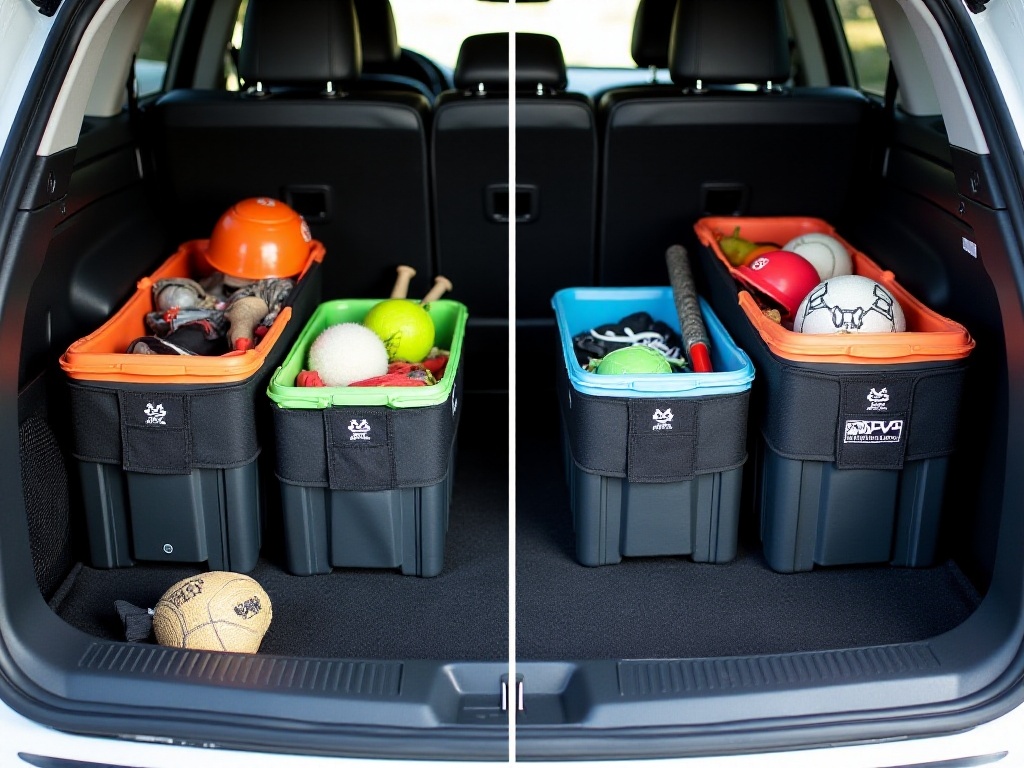
Storage Tips
After years of experimentation, I've gathered some practical storage advice. First, before planning any storage system, do a major cleanup. Take out all your sports equipment, repair what needs fixing, and dispose of what needs disposing. Don't let damaged or unused equipment take up space.
My current storage principle divides equipment into essentials and optional items. For basketball, the ball and shoes are essential, while training cones and scorekeepers are optional. Essentials go in the most accessible spots, while optional items can go in secondary locations. This improves efficiency and makes storage space more logical.
When choosing storage items, I recommend investing some thought. Storage boxes should be transparent for easy visibility. Choose hooks with strong weight capacity and rubber padding to protect equipment. Storage bags should be waterproof to handle slightly damp gear.
Additionally, a labeling system is important. All my storage boxes and bags are labeled, with different colors for different sports. This makes everything instantly recognizable and prevents mix-ups.
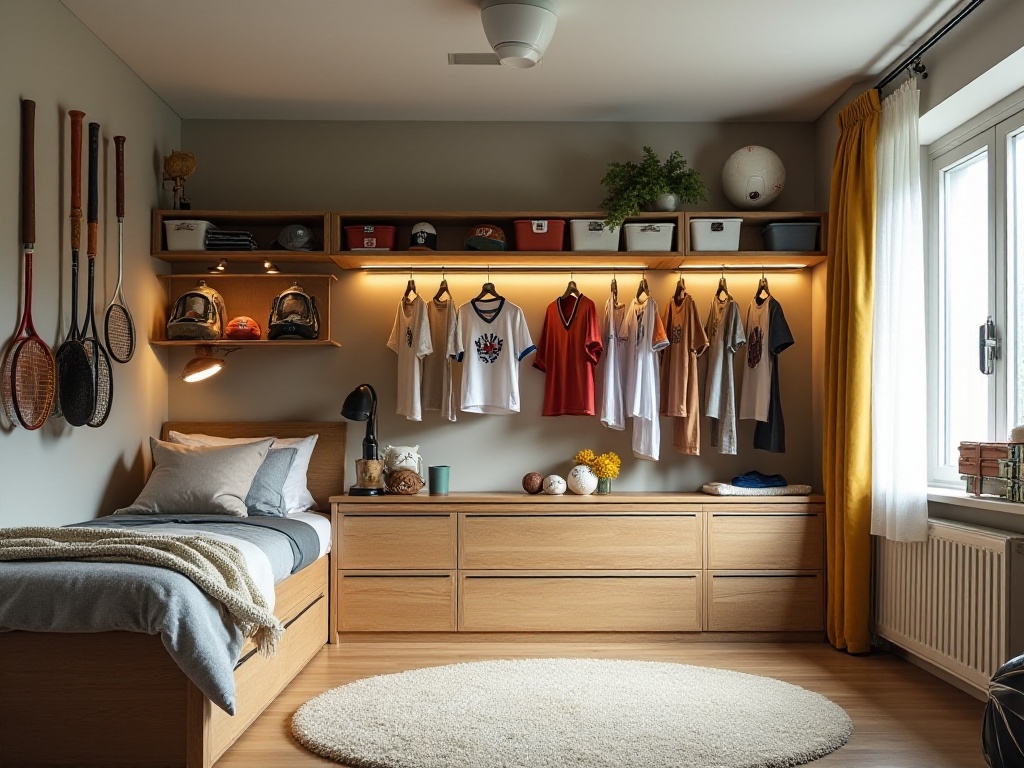
Final Thoughts
Honestly, establishing a comprehensive storage system requires time and effort, but trust me, it's absolutely worth it. When you open your storage area and see all your sports equipment neatly in its place, the satisfaction is indescribable.
You'll find that when all equipment is well-organized, your motivation to exercise increases significantly. No more stress about finding equipment or worrying about damage - you can focus more energy on the workout itself. Now when I wake up each morning and see my organized storage wall, I feel an immediate urge to exercise.
If you have any useful storage methods, please share them in the comments. Let's create clean and energetic workout spaces together! Trust me, a good storage system can definitely take your fitness lifestyle to the next level!



